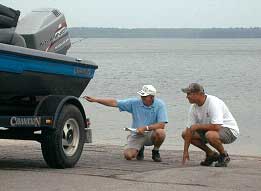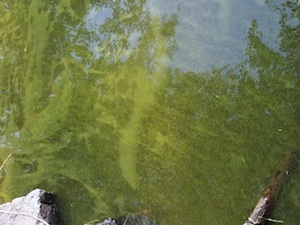Water Quality Updates
The Belgrade Lakes Association continues to lead and support efforts to preserve the water quality of Great Pond, Long Pond, and the surrounding watershed. Our focus includes gloeotrichia, phosphorous runoff, swimmer’s itch, and invasive species like milfoil.
Ongoing Water Quality Programs
- LakeSmart Program – Promotes lake-friendly property improvements to reduce runoff and phosphorus.
- Conservation Corps – Offers landscaping help to reduce erosion and protect water quality.

- Invasive Plant Patrols – Volunteer surveys to monitor and manage invasive aquatic species.
- Courtesy Boat Inspections – Staffed launch inspections to prevent milfoil spread on Great & Long Ponds.
- Volunteer Lake Monitoring – Citizen scientists collect valuable water quality data statewide.
- Swimmer’s Itch Program – Targets merganser relocation to reduce parasite presence in the lakes.
Watershed-Based Management Plan (WBMP)
In partnership with BRCA and DEP, the WBMP identifies and prioritizes phosphorus reduction strategies including remediation, land use improvements, and education initiatives. This 10-year plan enables grant funding and coordinated action to restore water health.

Gloeotrichia echinulata, a cyanobacteria
Gloeotrichia Research and Field Trials
- Ultrasound Field Trials – Tested use of sound waves to control blooms in North Great Pond.
- Underwater Noise Testing – Measured acoustic impact and effectiveness of ultrasound devices.
- Zooplankton/Phytoplankton Sampling – Assessed ultrasound impact on non-target lake organisms.
- Microscopy & Photography – Over 70 samples analyzed with 5,000+ photos taken by resident Sarah Melvin.
- Deep Hole Water Chemistry – Over 120 water samples from Great Pond collected and analyzed in partnership with Colby College.
- Volunteer Observation Program – 500+ observations across 30 lake locations collected over three months.
- Continued Solution Research – Working with scientists and agencies to explore nutrient control and mitigation methods.